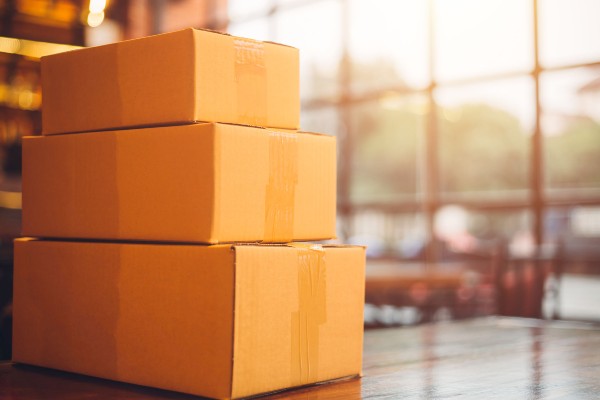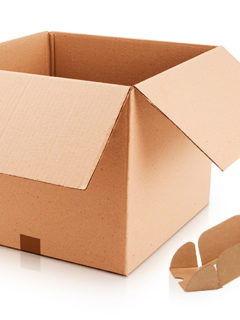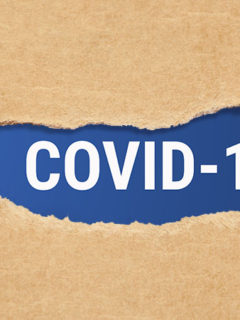Calculating the volume of a cardboard box is an essential skill in the operation of any business or online shop. Knowing the volume of a box is necessary to:
- Determine if it will have enough capacity to hold a given product.
- Weigh up how much space it will take up in the warehouse.
- Establish how much the courier company will charge us for transporting it to its final destination.
But… didn’t we study this at school, in maths class? It hasn’t rained! So much, that you have forgotten it, right? Well, don’t worry, we will be good and we won’t give you a surprise exam. Today at RAJA® we show you how to calculate the volume of a box and how to use this information to correctly store your goods, better plan your shipments and reduce transport costs. Recapture the spirit of that child who scribbled accounts in his notebook and read carefully!
Formula for calculating the volume of a box
The volume of a box is obtained by multiplying three magnitudes: Length, Width and Height.
Volume = Length x Width x Height
The three magnitudes must be expressed in the same unit of measurement, be it millimetres, centimetres or metres. If we calculate in centimetres, the volume will be in cubic centimetres (cm3); if we calculate in metres, the product of the multiplication will be expressed in cubic metres (m3).
In the packaging world, it is common to use centimetres to calculate the volume of cardboard boxes:
Volume of a carton (cm3) = Length (cm) x Width (cm) x Height (cm)
When it comes to optimising the packaging of your business, you will be interested in two types of volumes:
- Inner volume of a box, obtained by multiplying the inner measurements, gives you an idea of the capacity of the container and the amount of product it can hold.
- External volume of a box: This is calculated by taking into account the external measurements, which differ more from the internal measurements the thicker the walls of the box are. It is a useful metric for managing the occupation of space in the warehouse and for organising transport activities.
Let’s look at a practical example: let’s calculate the interior volume of a RAJA® single channel carton measuring 55 x 40 x 30 cm:
55 cm (length) x 40 cm (width) x 30 cm (height) = 66000 cm3
The inner volume of this packaging item would be 66000 cubic centimetres.
How to calculate the volume of a box in litres
One of the most used magnitudes to talk about volumes, apart from the metre and the cubic centimetre, is the litre. Oh, oh… it gets complicated. How to calculate the volume of a box in litres? Don’t panic, it’s very simple. You only have to take into account three equivalences:
1 cm3 = 1 ml
1000 cm3 = 1 l
1 m3 = 1000 l
Continuing with the previous example, what would be the volume of the 55 x 40 x 30 cm box in litres?
55 cm x 40 cm x 40 cm x 30 cm = 66000 cm3 = 66 l
The operation is simple: if one cubic centimetre equals one litre, 66000 cm3 is 66 litres.

what happens if we want to translate this information into kilograms? In that case, we have to take into account this equivalence:
1 l of water = 1 kg
The variation has to do with density . Thus, a liquid such as milk, which is denser than water, will weigh more, and another such as oil, which has a lower density, will weigh less.
Volumetric weight and volume of a box: are they the same?
The concept of the volume of a box is often confused with another very widespread concept in the logistics sector: the concept of volumetric weightthis is a measurement used by parcel companies to calculate the space occupied by a good inside a means of transport (train, plane, van, etc.) according to its dimensions. In fact, it is this figure which, together with the weight of the package, is taken as the basis for setting the freight rate.
The main difference between the two magnitudes is that, while there is only one universal formula for calculating the volume of a box, there are several for determining the volumetric weight, and all of them involve the inclusion of additional coefficients in the multiplication, such as a conversion factor or the cubic capacity of the goods.
However, both concepts are directly related: the smaller the volume, the lower the volumetric weight and, therefore, the lower the shipping costs, something you can start working on right now by putting into practice our tips to reduce the size of your packaging in 5 steps.
Now that you know how to calculate the volume… are you looking for cardboard boxes for your business? At RAJA® you will find what you need, we have more than 900 EcoResponsible formats always in stock!
















